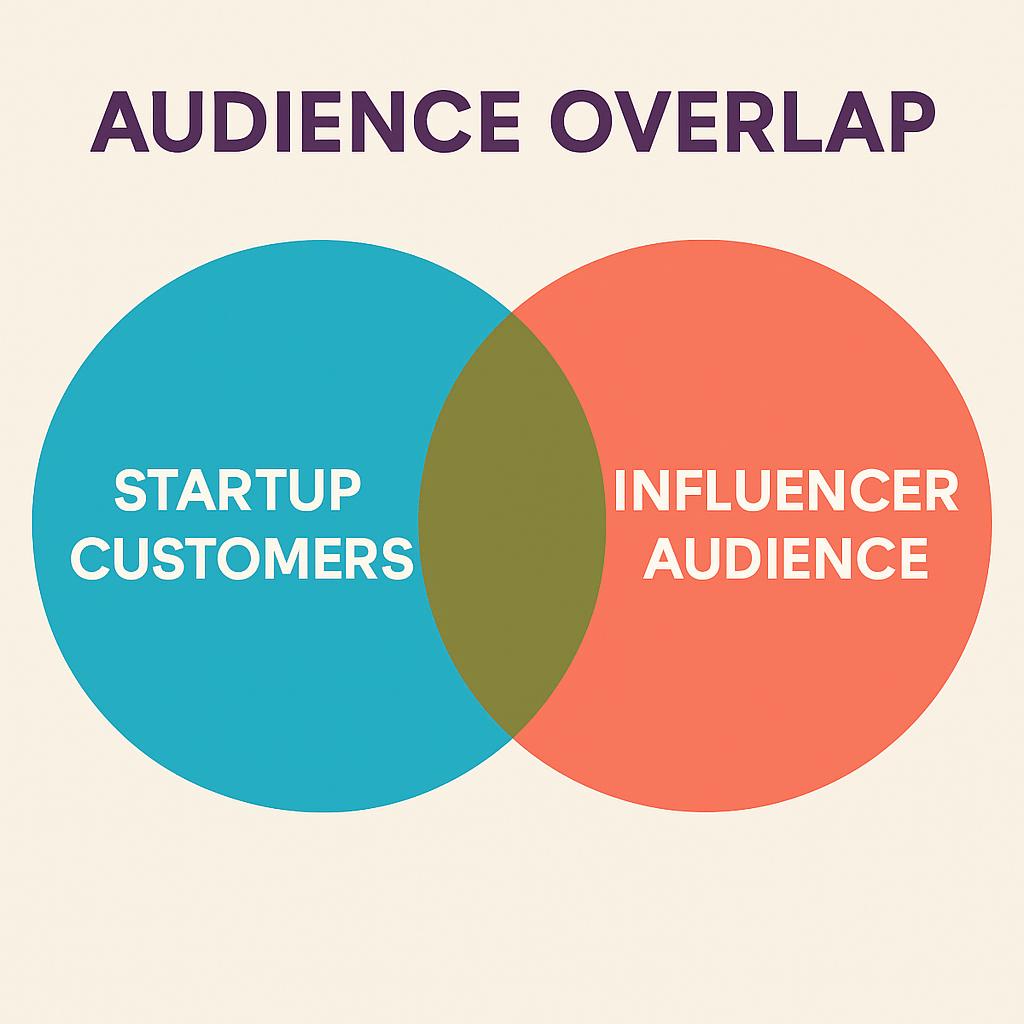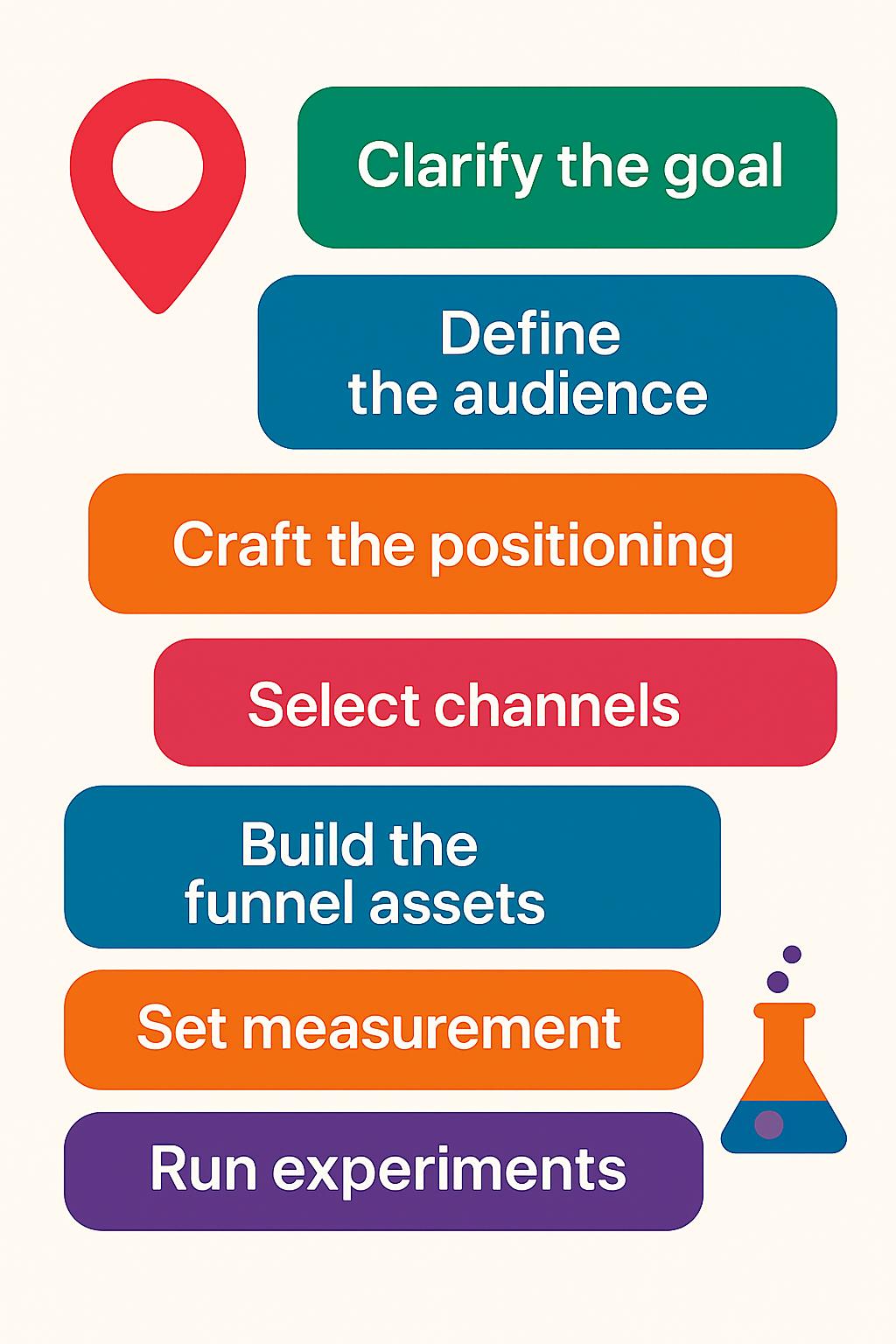Startup teams need visibility, leads, and proof that buyers care. They also need to spend every dollar with intent.
Marketing for startups intersects with go-to-market strategy: that’s why it should align with sales and product decisions. Clear positioning reduces waste, and consistent messaging compounds over time.
Yes, channels change, budgets are tight and founders wear many hats. But, startups can still make marketing happen and see real results.
After you read this article, you’ll be able to pick the right marketing strategy and make a simple, but effective plan.
Key Benefits of Marketing for Startups
Effective startup marketing does three things very well:
- It makes the right people care
- It proves value
- It creates a path to scale
These benefits often show up before revenue.
A few secondary effects also matter:
- Strong marketing attracts talent
- It convinces investors that the go-to-market model works
- A steady drumbeat of visibility helps the brand win mindshare in tight categories
Marketing Strategies for Startups
1. Content Marketing
Content is the operating system of modern growth. It fuels search, social, email, sales enablement, and investor updates. However, it only works when it answers real buyer questions in plain language.
a) Blogging & SEO
Blogs succeed when they help searchers complete tasks.
The best way to do that is with long-form pillar pages that cover a topic deeply, supported by short, direct answers to common questions.
Those who target intent-rich queries and build topic clusters often outperform random, disconnected posts.
What teams can do:
- Research terms that signal urgency, budget, and fit. Target long-tail keywords to capture qualified traffic before competitors.
- Structure posts for scanners. Clear H2s, short paragraphs, and action-led intros keep readers moving. For a repeatable layout, see an ideal blog post structure.
- Follow search quality standards. Google’s helpful content principles are a useful yardstick for relevance and expertise.
Even so, SEO is not a switch. It compounds with internal links, consistent publishing, and technical hygiene.
Founders should set realistic expectations and measure leading indicators such as impressions, SERP coverage, and branded search.
b) Social Media
Social helps a startup tell its story in public. It also creates lightweight touchpoints with prospects, analysts, and future hires. Still, the goal is not noise. It is consistent, valuable posts that reinforce positioning.
A focused system helps:
- Pick two platforms where buyers already engage.
- Publish on a predictable cadence with themes that the brand can own.
- Repurpose high-performing posts into threads, shorts, and carousels.
Timing and format matter. Teams can refine cadence using research on best posting times for social platforms. Additionally, marketing leads save time by using playbooks that cover KPIs and automation, as outlined in these social media strategy and KPI fundamentals.
c) Email Marketing
Email remains a direct line to buyers. It is low cost and measurable. Because subscribers opted in, it tends to convert better than cold channels when the value is clear.
A simple sequence can punch above its weight:
- Welcome email with a short value reminder and a clear next step.
- Education series that solves real problems and links to detailed guides.
- Occasional product announcements tied to outcomes, not features.
- Quarterly customer stories and tips that reinforce proof.
Benchmarks vary by industry, but public data can help teams set reasonable targets. For reference, these email marketing benchmarks provide open and click averages across sectors. Additionally, better calls to action lift performance.
A quick review of common CTA mistakes prevents leaks in the funnel:
 2. Paid Advertising (PPC & Social Ads)
2. Paid Advertising (PPC & Social Ads)
Paid media buys time. It does not fix weak positioning. If a startup knows its ideal customer and core value proposition, paid can deliver immediate learning and pipeline.
Search ads are a good first move for high-intent terms. They catch buyers already looking for a solution. Meanwhile, paid social shines for testing audiences and messages at the top of the funnel.
Helpful practices:
- Tight ad groups with a single intent per group.
- Message match between keyword, ad, and landing page.
- Clear conversion tracking from day one.
For execution, the official platforms publish reliable how-tos and policy updates. Teams can study formats, bidding models, and brand safety controls through the primary docs at Google Ads and Meta Ads for Business.
Budget control is critical. Startups can cap spend, widen targets only after hitting cost-per-lead goals, and pause any ad that fails to meet basic engagement. As data collects, they should move to experiments that compare headlines, offers, and audiences.
3. Influencer & Partnership Marketing
Recommendations from trusted voices shorten buying cycles. However, not every influencer is a fit. Relevance beats reach. Micro-partners in a tight niche often drive better outcomes than splashy names.
A practical program looks like this:
- List niche creators whose audiences overlap with the target segment.
- Offer value beyond payment, such as early access, co-creation, or exclusive insights.
- Track unique links and codes to attribute results.
Compliance matters. Teams operating in the United States must follow the Federal Trade Commission’s Endorsement Guides. The FTC clearly states when and how to disclose paid relationships.
Partnerships with complementary products can also pay off. Co-marketed webinars, integration guides, and marketplace listings drive warm leads. As a bonus, these collaborations create content that sales teams can reuse.

4. PR & Media Outreach
Press coverage does not replace product-market fit, yet it can open doors. It:
- Lends authority
- Attracts partners
- Generates organic backlinks that help search.
Founders should craft a newsworthy angle, not just an announcement. For example, they might publish proprietary insights or share a contrarian view of a trend. Additionally, a tight media list and personalized pitches raise reply rates.
Last, but not least, prepare a press kit that includes founder bios, product screenshots, a one-page fact sheet, and contact info. Reporters appreciate fast access to accurate assets.
History still teaches. Those curious about first principles can study Edward Bernays and the birth of public relations to understand why message framing shapes perception.
5. Guerrilla & Creative Marketing
Creative stunts can earn attention when budgets are small. The most effective ideas spread because they feel native to the audience.
Guerrilla marketing and creative marketing use unexpected tactics to create awareness without a big budget. For example, a startup might launch a street art campaign that points curious passersby to a free trial, or create a funny online quiz that leads users to discover their product. T
Today, teams can can embed shareable templates, run opt-in challenges, or tie giveaways to use of a new feature. For inspiration that blends scrappy tactics with modern tools, see creative ways to use AI in guerrilla marketing.
Humor used with taste can humanize a brand and increase memorability, especially when it lands a truth about the buyer’s day.
Building a Startup Marketing Plan
A plan is a promise to focus. Importantly, the best plans are short and measurable.
The following steps work well for pre-seed through Series A teams:
- Clarify the goal. Choose one primary outcome for the next 90 days.
- Define the audience. Document the ideal customer profile, buying triggers, objections, and deal breakers.
- Craft the positioning. Write a simple statement that explains the product, the problem, and the difference. Then mirror that language across ads, landing pages, and sales decks.
- Select channels. Pick two primary channels and one experimental channel. Sequence them.
- Build the funnel assets. Create one hero landing page, two or three lead magnets, and a short email sequence.
- Set measurement. Define what success looks like. Track leading and lagging indicators.
- Run experiments. Design small tests with a single hypothesis. Learn, document, and scale what works.

Content teams that anchor plans in story write faster and clearer. The craft is well covered in this guide to storytelling in content marketing.
Summary
Marketing for startups works best when it turns uncertainty into learning, and learning into revenue. A simple plan, tight feedback loops, and a willingness to iterate will carry a young company further than a big launch.
The marketing strategies we have described here are useful for different types of startups. They can apply them in their own marketing activities, or hire someone to do it for them. When it comes to content marketing, Stryng offers exactly that possibility. You can use it as an all-in-one AI-powered tool or let its team manage your entire content marketing for you.
| Strategy | Example Channels | Why It Matters for Startups |
|---|---|---|
| Content Marketing | Blog, Email, LinkedIn, Facebook | Builds authority & organic reach |
| Paid Advertising | Google Ads, Facebook Ads, LinkedIn Ads | Quick visibility & lead gen |
| Influencer Partnerships | Instagram, TikTok, Podcasts | Employs trusted voices |
| PR & Media Outreach | Online magazines, Product Hunt, Tech blogs | Develops credibility & exposure |
| Guerrilla Marketing | Events, Public stunts, Street marketing | Positive impact on a budget |
Frequently Asked Questions
Q: How much should a startup spend on marketing in the first year?
A: A practical range is 10 to 30 percent of projected first-year revenue, adjusted for sales model and runway. Early tests should be small and frequent. As cost per acquisition stabilizes, budgets can scale with confidence.
Q: What is the fastest channel to test?
A: Search ads reveal intent quickly. They capture buyers who are already looking. However, the speed only helps if landing pages convert and the offer is clear.
Q: How long does SEO take to work?
A: Most teams see early movement within a few months if technical issues are fixed and content is consistent. Competitive queries may take longer. Patience and internal links help.
Q: Should a startup hire an agency or keep marketing in-house?
A: In the earliest stage, a hybrid often works best. A small in-house owner sets direction. Specialists or agencies run specific tests that require deeper skills. Over time, repeatable channels move in-house.



